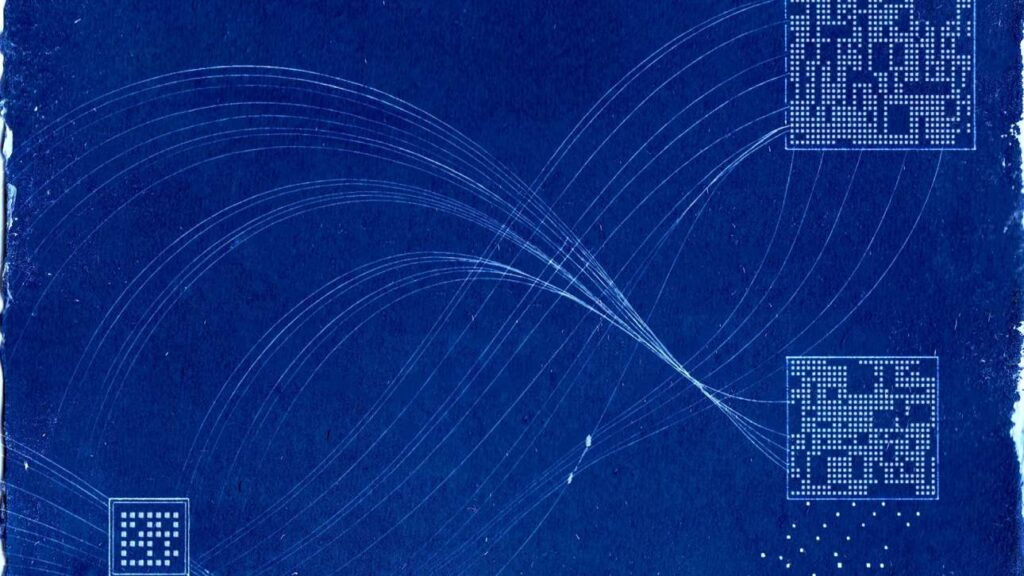Dr Andrea Kocsis (Chancellor’s Fellow, University of Edinburgh) and artist, Dorsey Kaufmann, have produced an exhibition exploring web archive metadata, as an output of Andrea’s National Library of Scotland Digital Research Fellowship 2024-25.
About the exhibition
Location: Inspace, 1 Crichton Street, Edinburgh, EH8 9AB.
Exhibition opening hours: 1000-1700, Wednesday 5 – Sunday 16 November 2025. Inspace, the venue, will also be projecting artwork as part of the exhibition on a street-facing screen that can be accessed from the outside street at any time.
Exhibition late session with panel discussion: 1800-2000, 6 November 2025.
Workshop: 1300-1430, 15 November 2025
Step into the forgotten corners of the internet with an exhibition that transforms real web archive data into playful, thought-provoking artworks.
From vanished websites to fading digital traces, these pieces invite you to reflect on what’s preserved, what’s lost, and what this can reveal about our identities and values.
As the lines blur between online and offline life, the exhibition asks: who decides what’s worth remembering, and how does that shape our shared story?
This event is funded by the ESRC Festival of Social Science, the National Library of Scotland, the British Academy and the Leverhulme Trust.

Dorsey Kaufmann on Digital Ghosts
‘This exhibition invites visitors to explore the complexities of missing, incomplete, and non-linear data within web archives through interactive and immersive installations. A key concept is embracing the idea that missing data is a form of epistemological knowledge in its own right. Through data physicalization, we give tangible form to the gaps in digital web archives, inviting audiences to consider the stories that lie in what is not included. The exhibition also confronts the inherent imperfection of web archives—data that is incomplete or lost due to the ephemeral nature of the web. Interactive network visualizations will lead viewers through the interconnected trails of decisions made by archivists about what to collect during the archival process and reveal their process of inclusion/ exclusion. By engaging with presence and absence, we challenge the traditional notion of data as a clean and whole representation, allowing visitors to reflect on the power dynamics behind data collection and what gets captured vs. left behind and why.
Missing data is a form of epistemological knowledge in its own right
Dorsey Kaufmann
Another central theme in the exhibition is the concept of time, particularly how non-linear, fragmented timelines can be represented in data visualization. The web doesn’t follow a clear progression of time; instead, websites appear, evolve, and disappear, leaving behind only traces, “ghosts,” or “shadows” of their existence. Building on time series data vis techniques (circos, spiral, solar, chronology charts, time ray maps, waterfall charts, etc…), we illustrate the lives of websites, from their peak of activity to their eventual decline or disappearance. By visualizing these “data ghosts,” we reflect on how digital content is both a product of its time and a reference to past and future narratives. The exhibition challenges viewers to think critically about the fluidity of time in digital spaces, where the past, present, and future are constantly intertwined, and invites them to explore the “hauntings” of the web connected to the rich sociopolitical history of Edinburgh — what is lost, forgotten, or simply never captured in the archive. The exhibition will serve as a key site for evaluating how different visual, tactile, and artistic approaches shape public interaction with digital.’
Find out more
Visit the Being Human Festival website: Digital Ghosts, Being Human Festival
Which dataset is this project using?
This project is using Scotland on the Internet (coming soon to Data Foundry)